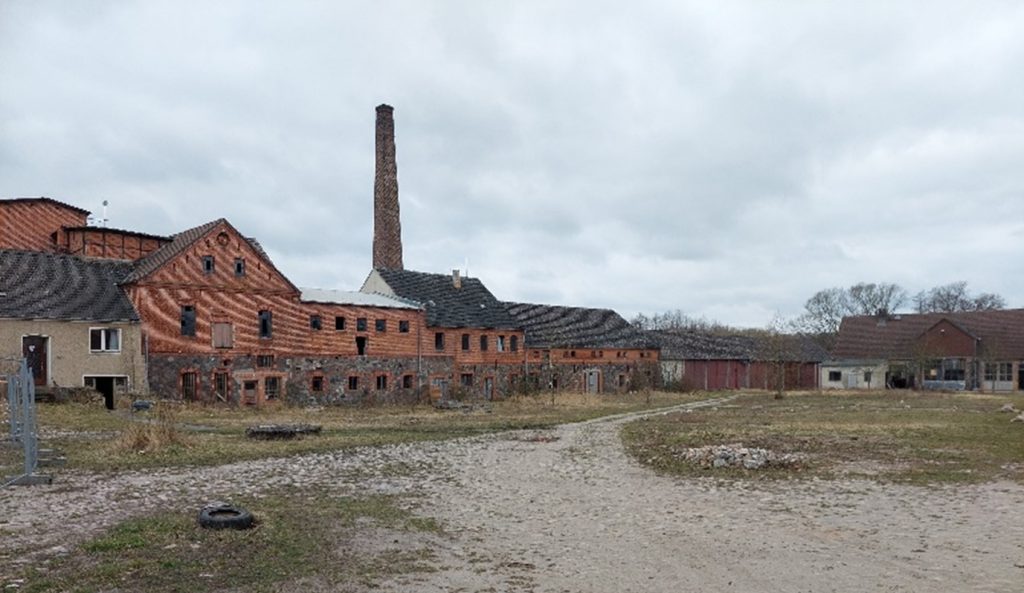by Maritchu Durand
It has now been more than two years that the Covid-19 pandemic has affected many aspects of our lives, including the way we conduct research for our project. Since none of us could go to Japan to conduct fieldwork, we decided to broaden our perspective and to take a look at urban-rural migration in our vicinity. I had seen a short documentary on neo-rurals on the European public service channel arte [1]recently, featuring a community project founded by former residents of Berlin in the capital’s surrounding region Brandenburg. I contacted them and got a quick and positive response: our team was welcome to pay a visit if we wished to get to know the place better. On a cool Saturday morning at the end of March, we packed our sandwiches, put on our hiking shoes and set off to Brandenburg.
Without a car, there are two possibilities to go there: either by bus that drives by every hour or so, or a 10 kilometer walk. We chose the second option and passed through small sleepy villages in-between large fields and pine forests. Surrounded by nature, I was expecting to find a community embedded in its natural environment, with inclines towards self-sufficiency, organic produce and sustainable farming. Previously, I had heard of farms in Brandenburg selling their local produce on markets in the capital. But what we found was slightly different and surprising.
Copyright © Cornelia Reiher 2022
After a two hour walk and a cold picknick on the damp grass, we were happy to reach the small village where the community project is located. Just across the pebble stone road, facing the church, is the entrance of Hof Prädikow: an abandoned complex that hosted many different buildings for different activities such as a forge, a brewery, a bakery and different storage buildings. Passing the gates, we entered the first courtyard: while the small café, the adjacent barn and an old building were already in use, most of the other buildings were either under construction or still rather run down. As soon as we arrived, one of the residents, whom I had previously emailed, greeted and invited us to sit and enjoy some home-made sweets and coffee.
Copyright © Cornelia Reiher 2022
In the café, we had the opportunity to talk to our host about the community project, how it came to be and how it functioned. It is run by a collective that currently consists of 60 adults and 30 children, mainly from Berlin. All members have already moved or will soon be moving to the village. The community is organized in specialized groups that are responsible for and possess expertise on different key fields in the community. It is based on the principle of sociocracy. Each adult member has a voice and participates in the decision-making process. One of the important decisions the community collectively makes is whom to accept as a new member and resident. They receive many applications and carefully choose its members, making sure they fit their mindset and agree to their overall goal to live together. But what did those individuals seek in the countryside? For some, it is a life surrounded by nature to raise their children as well as a life within a community. The latter refers to the feeling of being part of a collective and being able to realize personal projects within a group. Most of the residents want to get away from the city. Although the community is not designed as a weekend destination some residents seem to still be very much connected to the capital and keep their apartments in the city to return whenever necessary.

Copyright © Cornelia Reiher 2022
While living in the cooperatively owned apartments, residents initiate different events and projects. One project is the Café where locals and visitors of all ages can meet while enjoying a drink, a hearty homemade meal or artisanal cakes. Other projects include as a co-working space, a barn for events organized by locals and newcomers. Realizing these projects and the costly renovation of the old buildings was only possible thanks to several sponsors. I was surprised to find out that many actors from NPOs to regional and national governments were involved in financing the project.

Copyright © Cornelia Reiher 2022
This was a very interesting trip that allowed us to get a glimpse into urban-rural migration at our doorsteps. It was not exactly what I had expected. While I thought I would find more connections to agriculture and nature, the focus of the community was rather on communal and shared living. I was also surprised by how popular communal living is in Germany, something I have not come across in Japan – at least to that extent. On the contrary, some problems seemed to be quite similar to what we have seen in Japan, especially the relationship they had with the local population, between consensus building, skeptical beginnings and ideological differences. Do these types of community also exist in Japan? This is a question yet to be explored.
[1] https://www.arte.tv/de/videos/093706-001-A/re-der-lockruf-der-provinz/




